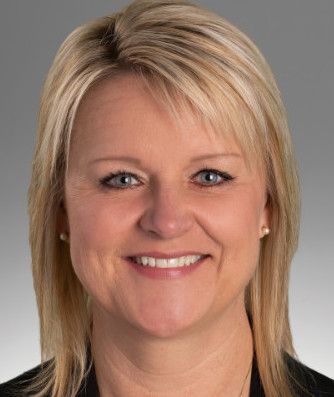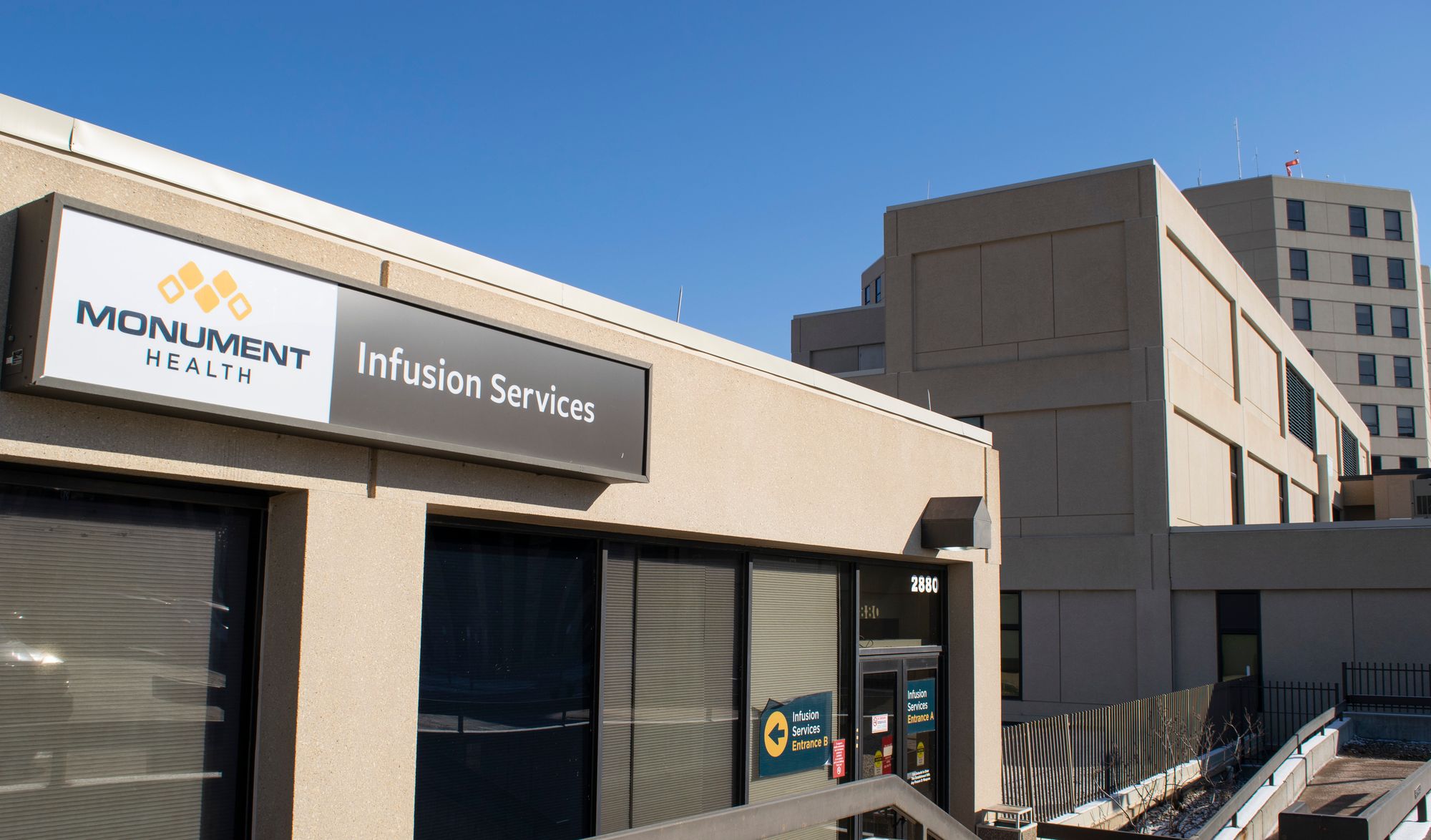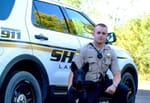A relatively new medical treatment that can reduce symptoms, speed recovery and even prevent death due to COVID-19 in some patients is widely available across the U.S. and South Dakota but is not being used as much as health officials and medical providers would like.
Only about 30% to 40% of the nation’s available supply of therapeutic treatments known as monoclonal antibodies had been administered as of late January, nearly three months after the drugs received emergency authorization for use by the U.S. Food and Drug Administration.
Monoclonal antibody treatments are lab-made proteins delivered to patients through infusions. The proteins heighten the immune system’s ability to fight the coronavirus by blocking the passage of the virus into human cells.
The treatment is being made available mostly to people who recently tested positive with COVID-19 and are age 65 or older or who have severe obesity, kidney disease or diabetes. Those who test positive and are 55 or over with an underlying medical condition can also qualify.
Two types of antibody treatments received emergency FDA authorization in November: bamlanivimab, developed by Eli Lilly and commonly known as “BAM”; and casirivimab/imdevimab, developed by Regeneron and commonly known by the company name.
The South Dakota medical community has generally embraced the treatments and has taken significant steps to develop an effective system of administering the drugs, including creating safe settings to give infusions, making doses of the drugs available in both urban and rural areas, and by implementing processes to notify new COVID-19 patients of their options for treatment.
Sanford Health, the Sioux Falls-based health system that is among the nation’s largest, has taken a lead role in South Dakota and beyond in setting up infusion centers and developing computer systems to identify and contact patients who may qualify for the treatments.
So far, medical providers have reported very positive results in regard to the treatment’s ability to reduce symptoms of COVID-19 and prevent hospital stays among those infected with the virus.
Officials with Sanford estimate the treatments have prevented a year’s worth of cumulative in-patient hospital stays by COVID-19 patients among the network’s medical system in South Dakota, Minnesota and Iowa.
“We’ve been able to provide this intervention and keep people out of the hospital and recover more quickly at home without that high level of care they might need otherwise,” said Amy Thiesse, vice president of nursing and clinical services at Sanford. “We find it very beneficial in delaying or stopping the progress of the disease.”
The drugs are provided by the federal government at no charge to states and typically are provided at no charge to patients. Treatments are covered by Medicaid and Medicare and most private insurance providers, though co-pay or deductible charges are likely. The cost of the infusion for an uninsured patient would be $1,000, according to Monument Health spokesman Dan Daly, though he added that Monument has internal programs that can lower or spread out that cost for uninsured patients.

“We’ve been able to provide this intervention and keep people out of the hospital and recover more quickly at home without that high level of care they might need otherwise; we find it very beneficial in delaying or stopping the progress of the disease.” – Amy Thiesse, vice president of nursing and clinical services at Sanford Health
Rollout slower than desired
The treatments began in the U.S. with infusions given to a handful of high-profile patients, including former President Donald Trump, who received the Regeneron infusion as part of his treatment for COVID-19 and touted its effectiveness.
The drugs were authorized for use in people over age 12 and over 88 pounds in weight, but are almost exclusively targeted now at those at highest risk of complications or death from COVID-19, including older patients with underlying medical conditions.
One hurdle to wider use of the treatments is that they typically must be prescribed and administered within 10 days of a positive COVID-19 test and before any serious symptoms take hold, or before patients are hospitalized or in need of oxygen therapy. The drugs are far less effective after that time frame and are unlikely to be prescribed at that point.
Some medical providers and potential patients are not fully convinced of the safety or effectiveness of the drugs because they were approved quickly by the FDA under emergency conditions. Many urban hospitals in the U.S. that are battling high COVID-19 case counts have also had difficulty allocating resources to provide antibody treatments.
The infusion is a procedure that can scare off some patients. Infusions take up to three hours and must be done at a medical office or hospital, and only with a referral from a doctor. Because they are known to be infected, patients seeking the treatment must be isolated as much as possible from the rest of the hospital in order to prevent further spread of the virus.
Furthermore, awareness of the availability of the drug has come on somewhat slowly in the medical community and especially among members of the public.
“It’s a combination of factors” that have slowed use of the drug, said Elleen Kane, a spokeswoman for the U.S. Health and Human Services Department. “Some of it is a lack of public awareness, some is that it’s kind of a different kind of treatment than people are used to, and you have to find patients who tested positive and then give them an infusion very quickly, so it takes some thinking through.”
HHS has been aggressive in purchasing doses of the drugs and has quickly delivered them to states and U.S. territories. As of Jan. 19, HHS had purchased about 785,000 doses of the two drugs and had delivered more than 580,000 to states and territories, according to the department’s data tracker. As of that date, South Dakota had received 3,550 doses of BAM and 590 doses of Regeneron, according to the website.
The federal agency in mid-January launched a new web-based locator for medical providers and the pubic to quickly identify hospitals and clinics where doses of the drug had been delivered by the federal government. At that time, HHS also announced it had made agreements to purchase about 300,000 more doses of Regeneron’s drug and about 3 million more doses of BAM from Eli Lilly.
Some states have seen a very slow rollout of antibody treatments. Massachusetts, for example, had received about 5,600 doses of the drugs but administered only 133 infusions as of early January. In Minnesota, medical providers had received about 12,450 doses of the treatments by early January and had administered only 1,650 infusions.
Learn more about antibody COVID-19 treatments
Here are some links to website that can provide more detailed information about monoclonal antibody treatments for COVID-19 patients.
Click here for an overview about the treatments and infusion process from the U.S. Department of Health and Human Services.
Click here to access an HHS online locator tool that shows which hospitals and clinics across South Dakota and the U.S. have received antibody treatments and how many.
Click here for a Frequently Asked Questions page on monoclonal antibody treatments created by the Minnesota Department of Health.
South Dakota taking proactive approach
South Dakota has taken a much more proactive approach to informing the medical community and the public about the treatments and creating a system to deliver the drugs to patients.
After several requests by News Watch for information from the state Department of Health regarding number of doses received and infusions delivered statewide, the department did not respond.
Gov. Kristi Noem shone a spotlight on the use and effectiveness of the drugs in her Jan. 12 State of the State Address by mentioning how the Good Samaritan Society nursing home in Wagner, S.D., had teamed with Wagner Community Memorial Hospital to successfully treat dozens of nursing home residents with BAM during a COVID-19 outbreak in December.
Even with strong systems of delivery in place, medical providers in South Dakota say they would like to make the treatments even more accessible and raise the rate of infusions given to newly diagnosed COVID-19 patients.
South Dakota health systems are continuing to look for ways to educate people about the availability and effectiveness of the treatments in the hope of improving the health of COVID-19 patients and reducing the need for hospital stays.
Monument Health, which serves much of West River, is providing infusions at hospitals in Rapid City, Sturgis, Lead-Deadwood, Spearfish and Custer, according to Brandi Tackett, director of clinical innovations at Monument.

In an email to News Watch, Tackett said Monument is making new COVID-19 patients aware of the treatment options through calls from its Covid Nurse Triage Center and by staying in contact with medical providers, emergency rooms and urgent-care centers across the region.
Monument has seen “lower than expected hospitalizations” among high-risk COVID-19 patients who have undergone the treatment, Tackett wrote.
The federal government, the state of South Dakota and individual providers have made it a priority to get doses of the antibody treatments to hospitals and clinics in rural areas to make the treatments accessible to rural residents.
“It is available where the patient lives, and the best advantage is that we can give it within their community or within a short drive and not have them drive to Sioux Falls,” Thiesse said. “Even if you’re not a Sanford patient, if you’ve had a positive COVID test in the past 10 days, reach out to us and we will get you set up with the treatment.”
The Faulkton Area Medical Center in north-central South Dakota received about three dozen doses of BAM in November and December and has since delivered about two dozen infusions, said Lindsey Poeppel, director of nursing at the 12-bed hospital.
Poeppel said she believes the treatments have saved lives and could have saved more COVID-19 patients if the drug had arrived earlier or its effectiveness had been better understood when Faulk County had a surge in cases in early November.
“We have not had to admit anyone who has taken BAM to our hospital,” she said. “If the word had been out, and if the drug had been given to us during our surge, we questioned if we could have saved a few more lives.”
Dr. Christopher Robbins, a practitioner with the Fall River Health Services in Hot Springs, said the rural provider received about 10 doses of the treatments and had administered about a half dozen as of mid-January.

The pace of infusions has been slowed somewhat by the fact that patients must be notified quickly after testing positive for COVID-19 and also need a referral from a physician, Robbins said. Educating the medical community and the public about the availability and effectiveness of antibody treatments or any other new therapeutics that are developed to treat COVID-19 will be an important and ongoing process, Robbins said.
“This is a very young virus that we’re still learning about, and all these treatments are still in that same window where we are still learning about them,” Robbins said. “Educating people on these processes at all levels is only good for everyone in terms of what’s available and when it’s available, from individuals to providers and everyone in between.”

Positive results shown so far
Administering the drug is done on an outpatient basis in a COVID-safe setting where all involved wear protective equipment and the patient sits in a recliner. The two- to three-hour process includes preparation of the dose, consultation between the patient and a nurse, insertion of an IV, an hourlong delivery of the drug and a final hour of observation before the patient is released.
“The numbers are showing that the infusions are proven effective in reducing hospitalization rates and even mortality in the high-risk population,” said Andrea Baker, nursing inpatient manager for Sanford Health. “Even when some are admitted to the hospital their level of service has been consistently lower compared to other patients who are admitted with COVID.”
Baker said Sanford has worked hard to connect with medical providers inside and outside the system as well as with individual patients to let them know the treatments are available, but that some people who test positive for COVID-19 still may not be aware of all their treatment options. The health system has provided about 400 infusions at its main hospital in Sioux Falls since Nov. 19, a spokeswoman said.
“There’s obviously people who do not know that this exists, but we do have quite a few people who call and say they had a positive test and heard that Sanford is offering these infusions, and is there any way [they] can receive this treatment,” Baker said.
Baker said patients who receive the treatments are contacted by phone by a medical professional within 48 hours of the infusions to check on their condition and progress.
“We are seeing that a lot of patients are feeling better about 36 hours after receiving the infusion,” Baker said.
Sanford Health determined who was eligible for the treatment by creating a computer program to automatically check the health records of people who test positive for COVID-19.
If those who test positive meet the age criteria or have known co-morbidities, a call-center employee from Sanford contacts them and informs them that the antibody treatments are available.
Word of mouth among the public has steadily increased, and now more people are calling Sanford or their local doctors to inquire about the treatments upon testing positive, she said.
John G. Murphy of Rapid City and his wife both tested positive for COVID-19 on Jan. 18, about two weeks after John had a medical procedure at Monument Health and a few days after their 5-year-old grandson who spends time with them had run a high fever. The couple got tested after their grandson tested positive for COVID-19.
While being informed of the positive test results by phone, John, 68, and his wife, 66, were told they both qualified for the antibody treatments due to age and underlying medical conditions. They asked their primary doctor to refer them for the treatment, and over the next two days, they both underwent hourlong infusions of the Regeneron drugs at the Monument hospital in Rapid City.
Murphy said he had minor side effects, such as tingling in his fingers and toes and mild chills that went away on the second day, “I feel these were indications of a good thing happening,” he wrote in an email to News Watch.
Soon after the infusions, Murphy said he and his wife began to recover and saw a reduction in earlier COVID-19 symptoms that had included lack of appetite, major fatigue and a sore throat.
About a week after the infusions, John said they received a call from the state health department and were told they could end their isolation. “It is effective and helped us recover,” Murphy wrote of the antibody treatment. The Murphys have health insurance and have yet to receive a bill for the treatment, Murphy wrote on Jan. 26.




